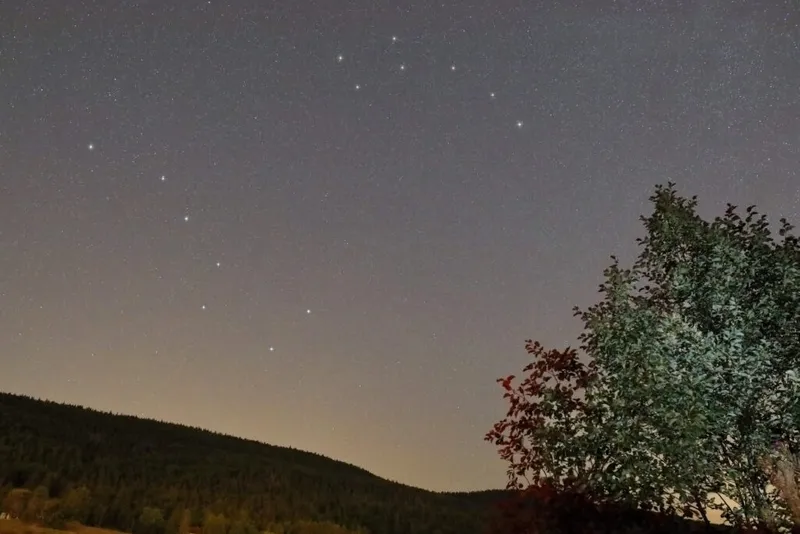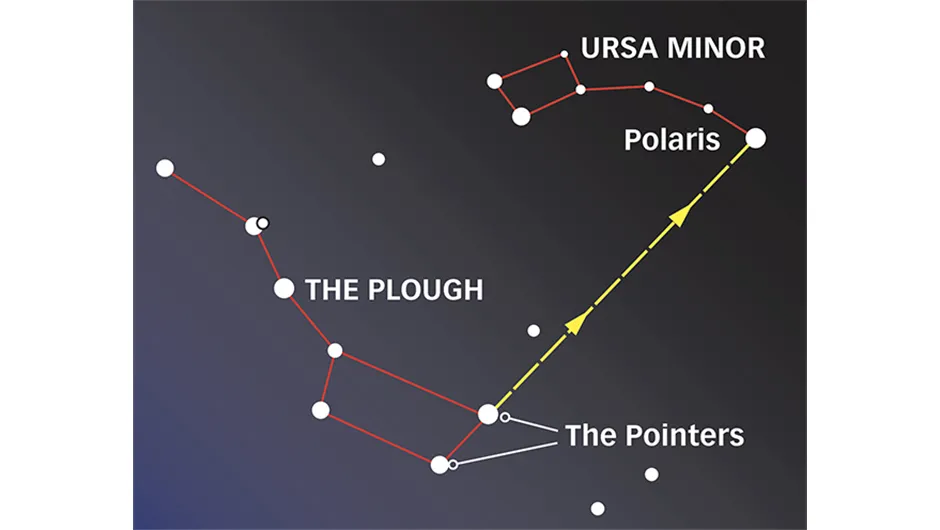The constellation Ursa Minor often feels like it's playing second fiddle to the much larger Ursa Major.
Known as the Little Bear and the Great Bear, respectively, these two constellations are what's known as circumpolar constellations because, from the Northern Hemisphere, they're visible throughout the year.
But what's the difference between Ursa Major and Ursa Minor, and isn't Ursa Minor just as important?

Minor vs Major
Describe something as 'minor' and it sounds like you’re insulting it or at least putting it down.
If a film or a play is a 'minor success' it obviously didn’t take very much money.
Describing someone as a 'minor celebrity' means they’re a household name, but in only their friends’ and families’ houses, and so on. This is true in astronomy, too.
As we sweep our gaze across the sky on a clear night we skip over Leo Minor and Canis Minor because, let’s be honest, they are unremarkable-looking splats of faint stars, over-shadowed by their bigger, brasher neighbours, Leo and Canis Major, which contain a striking asterism (The Sickle) and the brightest star in the whole sky (Sirius) respectively.
The third minor constellation is much smaller and less striking than its major neighbour too.

What makes Ursa Minor an important constellation
Ursa Minor's seven brightest stars form an asterism with a very distinctive, even iconic shape, and it also contains the most important star in the whole of the northern sky.
Its seven brightest stars can be joined up dot-to-dot style to make the famous 'Little Dipper'.
The brightest of Ursa Minor's seven stars is Polaris, the Pole Star or the North Star, the star around which every other star in the northern sky appears to wheel.
Let’s take a closer look at this small but much-loved constellation.

Stars of Ursa Minor
The stars of Ursa Minor are Polaris, Yildun, Urodelus, Alifa Al Farkadain, Anwar Al Farkadain, Pherkad and Kochab.
Polaris
Lying 430 lightyears away from us, Polaris is also famously known as The Pole Star, or The North Star, because it sits directly above the Earth’s northern polar axis.
This means that as Earth turns, Polaris appears to stand still through the night, like a drawing pin pressed into the sky, while all the other stars appear to wheel around it.
Polaris is the brightest star in Ursa Minor, and many people grow up believing that Polaris is the brightest star in the sky because it is often shown looking very bright in films and on TV shows.
In fact, with a magnitude of 2, Polaris is only the 48th brightest star in the sky.
Yildun
The 6th brightest star in the Little Dipper, magnitude 4.3 Yildun is a white, class A1 star 172 lightyears away from Earth.
Urodelus
This class G5 orange star shines at magnitude 4.2, and is 304 lightyears from Earth
Alifa Al Farkadain
This white, class A3 star lies 370 lightyears from Earth. It is more than 200 times more luminous than our own Sun.
Anward Al Farkadain
The closest to Earth of the Little Dipper’s seven stars, this pale yellow white class F5 star is just 97 lightyears away. Magnitude 5, it is the faintest Little Dipper star.
Pherkad
One of the two 'Guardians of the Pole' stars, this third magnitude, white-hot class A3 giant star is a pulsating variable. It lies 490 lightyears away, making it the farthest of the Little Dipper stars.
Kochab
The closest of the two 'Guardians of The Pole' stars to Polaris, this 130 lightyear-distant K4 orange sun is only slightly fainter than Polaris itself. Kochab is a giant star 40 times wider than our own Sun and is circled every 522 days by an unnamed exoplanet, more than 6 times as massive as Jupiter.
